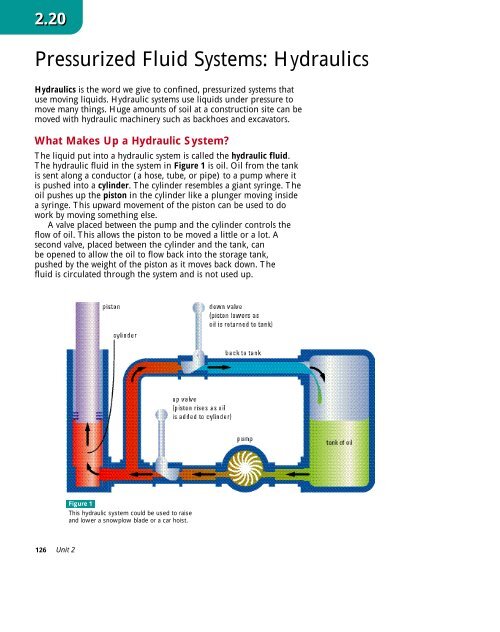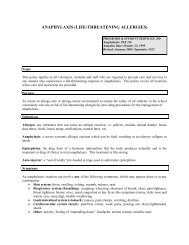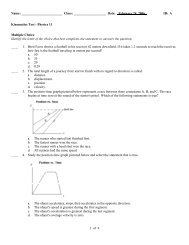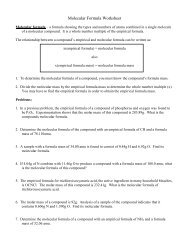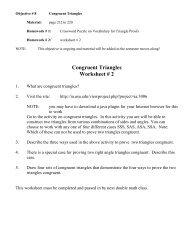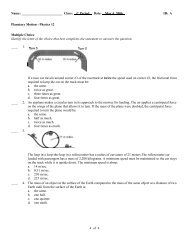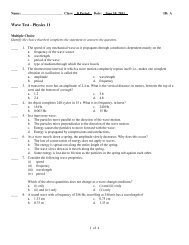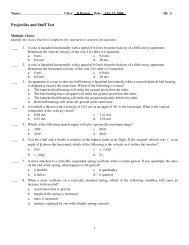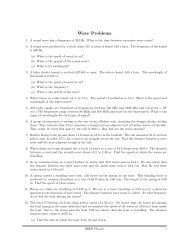Pressurized Fluid Systems: Hydraulics
Pressurized Fluid Systems: Hydraulics
Pressurized Fluid Systems: Hydraulics
- No tags were found...
You also want an ePaper? Increase the reach of your titles
YUMPU automatically turns print PDFs into web optimized ePapers that Google loves.
2.20<strong>Pressurized</strong> <strong>Fluid</strong> <strong>Systems</strong>: <strong>Hydraulics</strong><strong>Hydraulics</strong> is the word we give to confined, pressurized systems thatuse moving liquids. Hydraulic systems use liquids under pressure tomove many things. Huge amounts of soil at a construction site can bemoved with hydraulic machinery such as backhoes and excavators.What Makes Up a Hydraulic System?The liquid put into a hydraulic system is called the hydraulic fluid.The hydraulic fluid in the system in Figure 1 is oil. Oil from the tankis sent along a conductor (a hose, tube, or pipe) to a pump where itis pushed into a cylinder. The cylinder resembles a giant syringe. Theoil pushes up the piston in the cylinder like a plunger moving insidea syringe. This upward movement of the piston can be used to dowork by moving something else.A valve placed between the pump and the cylinder controls theflow of oil. This allows the piston to be moved a little or a lot. Asecond valve, placed between the cylinder and the tank, canbe opened to allow the oil to flow back into the storage tank,pushed by the weight of the piston as it moves back down. Thefluid is circulated through the system and is not used up.Figure 1This hydraulic system could be used to raiseand lower a snowplow blade or a car hoist.126 Unit 2
Pumps and ValvesA pump is used to create a flow of fluid. Pumps oftenmake fluids flow against gravity. They are found in carengines (Figure 2), gasoline pumps at gas stations,dishwashers, and many other machines.Valves control the flow of fluid. There are manydifferent types, but they all have a similar function: tokeep a fluid flowing in the desired direction. When youturn on a water tap, you are opening up a valve. Thereare numerous places where valves are found, includingtires, soccer balls, and the human heart. Can you thinkof any others?abThe Heart: A <strong>Pressurized</strong> <strong>Fluid</strong> SystemYour heart is also a pump. (See Figure 3.) It beats over100 000 times a day to push blood through the veinsand arteries that make up your circulatory system.There are four chambers in the heart: right atrium,right ventricle, left atrium, and left ventricle. Thechambers in the upper part of the heart are separatedfrom those below by valves. The valves allow blood toflow in only one direction. Knowledge of how fluidflows flow through valves was used to design artificialheart valves.Blood pressure ensures that all of your organsreceive blood. Physicians measure blood pressure withan instrument called a sphygmomanometer.Figure 3The heart is essentially a pump with valvesthat pushes blood around your body.What conductors will you useto move the fluid in yourDesign Challenge?Figure 2a In a car fuel pump, the diaphragm pullsdown allowing fuel to enter the pumpchamber.b Fuel is pushed into the engine when thediaphragm pushes up.Understanding Concepts1. List two industries that usehydraulic power.2. What makes the fluid flow in apressurized system? Whatcontrols this flow?Making Connections3. (a) What conductors can be usedin a hydraulic system?(b) What conductors serve thisfunction in the humancirculatory system?(c) What conductors are found ina tree? What is the fluid thatis being moved?4. Compare and contrast a car fuelpump with a human heart using aVenn diagram.Reflecting5. How has knowledge of hydraulicsaided our understanding of thehuman circulatory system?<strong>Fluid</strong>s 127


